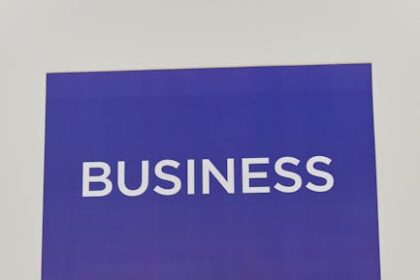The Strategic Imperative of Video Advertising in Modern Marketing
Video advertising has transcended its initial role as a supplemental marketing tactic to become an indispensable pillar of comprehensive digital strategies. Its power lies in its unparalleled ability to convey complex messages, evoke emotion, and build brand affinity in a way that static imagery or text simply cannot. Businesses leveraging paid video channels are not merely buying ad impressions; they are investing in direct, impactful engagements with their target audience, navigating a landscape where attention is a scarce commodity. The evolution from traditional broadcast commercials to highly targeted digital video ads marks a profound shift, offering unprecedented control over audience reach, message delivery, and measurable performance. This transformation necessitates a deep understanding of video formats, platform nuances, audience psychology, and performance analytics to truly capitalize on the medium’s potential for driving business objectives, from enhancing brand awareness to accelerating direct conversions.
Understanding the Landscape and Core Benefits of Paid Video Channels
The digital ecosystem for video advertising is vast and continuously expanding, encompassing major social media platforms, search engines, dedicated video-sharing sites, and the burgeoning realm of Connected TV (CTV) and programmatic video. Each channel offers unique advantages and audience demographics, demanding a tailored approach. The core benefits of integrating video into paid media strategies are multifaceted. Firstly, video boasts superior engagement rates. Viewers are more likely to watch, share, and remember video content, leading to higher brand recall and stronger emotional connections. This inherent stickiness makes video an excellent vehicle for storytelling, allowing brands to articulate their value proposition and narrative in a compelling, dynamic format.
Secondly, video provides unparalleled targeting capabilities. Unlike traditional television, digital video platforms allow advertisers to pinpoint specific demographic groups, psychographic profiles, interests, behaviors, and even custom audiences based on their own customer data. This precision minimizes wasted ad spend, ensuring that messages reach those most likely to convert or engage meaningfully. For instance, a sports apparel brand can target individuals who have recently searched for running shoes or frequently watch fitness-related content, rather than broadly advertising to all television viewers.
Thirdly, the measurable nature of digital video advertising offers actionable insights. Advertisers can track a wide array of metrics, from view-through rates (VTR) and click-through rates (CTR) to completed views, conversions, and return on ad spend (ROAS). This data-driven approach allows for real-time optimization, enabling marketers to refine their campaigns, test different creatives, adjust bidding strategies, and reallocate budgets for maximum efficiency and effectiveness. This iterative process of testing, learning, and optimizing is a cornerstone of successful paid video campaigns, distinguishing them sharply from the more opaque performance metrics of traditional advertising.
Finally, video ads offer versatility in format and placement. From short, punchy bumper ads designed for brand recall to longer, narrative-driven in-stream ads intended for deeper engagement, and vertical video formats optimized for mobile consumption, the options are extensive. This flexibility allows brands to adapt their messaging and creative style to suit different stages of the customer journey and various platform environments, ensuring that the ad experience feels native and less intrusive to the viewer. This adaptability is critical for maintaining audience attention in an increasingly fragmented media landscape.
Strategic Planning: Laying the Foundation for Successful Video Campaigns
Effective video advertising begins long before creative production or media buying. It starts with a meticulously crafted strategy that aligns video objectives with broader business goals. The foundational steps involve defining clear campaign objectives, understanding the target audience in granular detail, and mapping the role of video across the marketing funnel.
1. Defining Clear Campaign Objectives:
Without specific, measurable, achievable, relevant, and time-bound (SMART) objectives, campaign success becomes impossible to gauge. Common objectives for video ad campaigns include:
- Brand Awareness: Increasing recognition and recall for a brand, product, or service. Metrics might include impressions, unique reach, view-through rate (VTR), and brand lift studies.
- Lead Generation: Capturing contact information from interested prospects. Key performance indicators (KPIs) would include lead form submissions, sign-ups, and cost-per-lead (CPL).
- Website Traffic: Driving qualified visitors to a specific landing page or website. Metrics include click-through rate (CTR), landing page views, and bounce rate.
- Conversions/Sales: Directly driving purchases, downloads, or other desired actions. KPIs are sales volume, conversion rate, and return on ad spend (ROAS).
- Consideration/Engagement: Encouraging deeper interaction with content or the brand. Metrics might include watch time, shares, comments, and repeat views.
- Customer Retention/Loyalty: Re-engaging existing customers or building community. Metrics like repeat purchases, customer lifetime value (CLV), and engagement with loyalty programs.
Each objective dictates different creative approaches, targeting strategies, bidding models, and measurement frameworks. For example, a brand awareness campaign might prioritize reach and frequency with a CPM (cost-per-mille) bidding strategy, while a conversion-focused campaign would opt for CPA (cost-per-acquisition) or ROAS bidding with a strong call-to-action.
2. In-Depth Audience Research:
Understanding who you are trying to reach is paramount. This goes beyond basic demographics to encompass psychographics, behaviors, pain points, aspirations, media consumption habits, and preferred platforms.
- Demographics: Age, gender, income, education, location.
- Psychographics: Personality traits, values, attitudes, interests, lifestyles.
- Behavioral Data: Online activities, purchase history, search queries, website visits, app usage.
- Pain Points & Needs: What problems does your product/service solve for them? What are their unmet needs?
- Media Consumption: Where do they spend their time online? Which video platforms do they frequent? Are they heavy mobile users or do they consume content on CTV?
- Customer Journey Mapping: How do potential customers discover, research, evaluate, and purchase products like yours? Where does video fit into this journey?
Leveraging tools like Google Analytics, Facebook Audience Insights, CRM data, and third-party market research can provide a comprehensive view of your target audience, enabling more precise targeting and highly resonant creative development.
3. Mapping Video Across the Marketing Funnel:
Video can play distinct roles at different stages of the customer journey:
- Awareness (Top of Funnel – TOFU): Short, attention-grabbing videos (e.g., bumper ads, short social video ads) focused on brand story, unique selling propositions (USPs), and broad problem awareness. Objectives are usually reach and impressions.
- Consideration (Middle of Funnel – MOFU): Longer-form videos (e.g., product demos, explainer videos, customer testimonials, thought leadership content) that educate potential customers, build trust, and address specific pain points. Objectives are engagement, website visits, and lead generation.
- Conversion (Bottom of Funnel – BOFU): Direct response videos with strong calls-to-action, featuring special offers, immediate benefits, or case studies. Objectives are sales, sign-ups, or specific conversions.
- Retention/Loyalty (Post-Purchase): Videos offering tutorials, support, community building, or sneak peeks of new products to foster loyalty and repeat business.
A successful strategy often involves a sequence of video ads, retargeting viewers who engaged with TOFU content with MOFU ads, and then BOFU ads, guiding them progressively down the funnel.
Creative Development: Crafting Impactful Video Ad Content
The effectiveness of a video ad hinges critically on its creative execution. A poorly produced or unengaging video, no matter how well-targeted, will fail to resonate. High-quality creative development involves a blend of storytelling, visual appeal, auditory elements, and strategic messaging tailored to specific platforms and objectives.
1. Storytelling and Narrative Arc:
The most memorable video ads tell a story. This doesn’t necessarily mean a complex plot, but rather a concise narrative that connects emotionally with the viewer.
- Hook: Capture attention within the first 3-5 seconds. This could be a surprising visual, an intriguing question, a bold statement, or a compelling character.
- Problem/Solution: Introduce a relatable problem or pain point your audience faces, then position your product/service as the ideal solution.
- Benefit-Driven: Focus on what your product does for the customer, not just what it is. Highlight the benefits and emotional outcomes.
- Call-to-Action (CTA): Clearly instruct the viewer on the next desired step (e.g., “Shop Now,” “Learn More,” “Sign Up”). The CTA should be prominent, clear, and appear at an opportune moment, often multiple times for longer videos.
2. Visual Aesthetics and Production Quality:
High production value isn’t always about a massive budget; it’s about clarity, professionalism, and aligning with brand identity.
- High-Resolution Footage: Crisp, clear visuals are non-negotiable.
- Consistent Branding: Incorporate logos, brand colors, and visual styles consistently.
- Appropriate Pacing: Fast cuts for energetic ads, slower pacing for emotional or educational content.
- Mobile-First Design: Given the prevalence of mobile viewing, consider vertical video formats (9:16 aspect ratio) for platforms like Instagram Stories, TikTok, and Reels. Ensure text is legible on small screens.
- Thumb-Stopping Power: On crowded feeds, the initial visual frame (thumbnail) and the first few seconds are crucial for grabbing attention.
3. Sound Design and Music:
Audio is often overlooked but plays a vital role in setting the mood, conveying emotion, and enhancing the narrative.
- Clear Voiceover/Dialogue: Ensure speech is easily understood, free from background noise.
- Strategic Music Choice: Music can evoke specific feelings (excitement, calm, urgency) and establish brand tone. Ensure proper licensing for all music used.
- Sound Effects: Judicious use of sound effects can heighten impact and create a more immersive experience.
- Captions/Subtitles: Essential for accessibility and for viewers who watch without sound (a common behavior on social media).
4. Ad Format Considerations:
The type of video ad you create should be tailored to the platform and objective.
- In-Stream Ads: Play before, during, or after video content (e.g., YouTube TrueView, Facebook In-Stream). Often longer and more narrative.
- Out-Stream Ads: Appear within text-based content or app feeds (e.g., Google Video Partners, many programmatic placements). Auto-play without sound.
- Bumper Ads: Short, non-skippable (6 seconds max) ads ideal for brand awareness and frequency.
- Discovery Ads (YouTube): Appear in search results or alongside related videos, relying on viewer intent.
- Vertical Video: Optimized for mobile viewing on platforms like Instagram Stories, TikTok, and Reels.
- Shoppable Video: Integrating direct purchase links or product tags within the video itself.
- Interactive Video: Allowing viewers to click on elements, make choices, or answer questions within the ad.
5. A/B Testing Creatives:
Always test multiple versions of your video ads (different hooks, CTAs, lengths, music) to identify what resonates best with your audience. Small iterative improvements can lead to significant gains in performance.
Targeting and Audience Segmentation: Reaching the Right People
Precision targeting is a hallmark of digital video advertising, allowing advertisers to move beyond broad demographics to highly specific audience segments. This minimizes ad waste and maximizes the likelihood of reaching individuals who are genuinely interested in your offering.
1. Demographic Targeting:
Basic audience attributes like age, gender, income level, education, parental status, and geographic location. Useful for broad segmentation but insufficient for nuanced campaigns.
2. Psychographic Targeting:
Delving into personality traits, values, interests, attitudes, and lifestyles. Platforms like Facebook and Google offer interest-based targeting derived from users’ online activities, content consumption, and stated preferences. For instance, targeting “organic food enthusiasts” or “adventure travel seekers.”
3. Behavioral Targeting:
Based on observed online actions and historical data. This includes:
- Purchase History: Targeting individuals who have purchased similar products.
- Search History: Targeting those who have searched for relevant keywords.
- Website Visit History: Retargeting visitors to your website or specific pages.
- App Usage: Targeting users of specific mobile applications.
- Device Usage: Targeting users on specific devices (mobile, desktop, tablet, CTV).
4. Custom Audiences (First-Party Data):
Leveraging your own customer data is incredibly powerful.
- Customer Lists: Uploading email lists or phone numbers of existing customers to create custom audiences for re-engagement or exclusion (to avoid showing ads to recent purchasers).
- Website Visitors: Creating audiences of people who visited your website, specific pages, or took certain actions (e.g., added to cart, viewed a product). This is the basis for retargeting.
- App Users: Targeting users of your mobile application based on their in-app behavior.
- Engagement Audiences: People who have previously engaged with your content on a specific platform (e.g., watched a previous video ad, liked a Facebook page, interacted with an Instagram post).
5. Lookalike Audiences:
One of the most effective targeting methods, lookalike audiences are built by platforms (like Facebook or Google) by identifying users who share similar characteristics to your existing custom audiences (e.g., your customer list, website visitors, engaged video viewers). This expands your reach to new, highly qualified prospects who are likely to be interested in your brand.
6. Contextual Targeting:
Placing ads on specific websites, apps, or videos that are relevant to your product or service. For example, a travel company placing ads on travel vlogs or websites about tourist destinations. This ensures brand safety and relevance.
7. Affinity and In-Market Audiences (Google/YouTube):
- Affinity Audiences: Based on users’ long-term interests and passions, representing their lifestyle (e.g., “Foodies,” “Auto Enthusiasts”). Good for broad brand awareness.
- In-Market Audiences: Based on users’ recent search activity and browsing behavior, indicating they are actively researching a product or service in a specific category (e.g., “people looking to buy a new car,” “people looking for financial services”). Ideal for driving conversions.
8. Advanced Targeting Combinations:
The true power of targeting often lies in combining multiple layers. For instance, targeting “women aged 25-45” who are “in-market for home decor” and “have visited your website in the last 30 days.” This multi-layered approach ensures hyper-specificity and significantly improves campaign performance. Regular review and refinement of targeting parameters are crucial for ongoing optimization.
Platform-Specific Strategies: Navigating the Video Ad Ecosystem
Each major paid video channel possesses unique characteristics, audience demographics, ad formats, and bidding mechanisms. A cookie-cutter approach will yield suboptimal results. Understanding these nuances is key to maximizing campaign effectiveness.
1. YouTube Advertising:
As the world’s second-largest search engine and primary video platform, YouTube is indispensable for video advertising.
- TrueView In-Stream Ads: Skippable ads that play before, during, or after other videos. Advertisers only pay if the viewer watches for 30 seconds (or the entire ad if shorter) or interacts with it. Ideal for consideration and conversions. Focus on a strong hook.
- TrueView Video Discovery Ads (formerly In-Display Ads): Appear in YouTube search results, alongside related videos, or on the YouTube mobile homepage. They invite viewers to click to watch. Excellent for driving intent-based engagement and deeper content exploration.
- Bumper Ads: Non-skippable, 6-second video ads. Highly effective for driving brand awareness and reach with high frequency. They are short, memorable, and deliver a concise message.
- Non-Skippable In-Stream Ads: Up to 15-30 seconds long, these ads cannot be skipped. Guarantees message delivery but requires highly engaging content to avoid viewer fatigue. Used for critical awareness messages.
- Outstream Ads: Mobile-only ads that appear on Google Video Partners (websites and apps outside of YouTube). They play automatically without sound until tapped. Good for extending reach beyond YouTube.
- Masthead Ads: A premium, reservation-based format that takes over the YouTube homepage for 24 hours. Ideal for massive reach and brand splash during major launches or events.
- Targeting Nuances: Leverages Google’s extensive targeting capabilities, including custom intent audiences (based on search queries), detailed demographics, life events, in-market segments, affinity audiences, and remarketing lists. Consider running Discovery ads for specific search terms and In-Stream for broader awareness or remarketing.
2. Facebook and Instagram Video Ads:
Meta’s platforms are powerful for video advertising due to their vast user base, rich audience data, and social-centric engagement.
- In-Stream Video Ads: Appear in Facebook Watch or other in-stream placements. Can be 5-15 seconds and are non-skippable or skippable.
- Feed Video Ads: Native video posts that appear in users’ Facebook and Instagram feeds. These are highly versatile and can be longer, encouraging engagement through likes, comments, and shares. Aspect ratio flexibility (1:1, 4:5, 9:16, 16:9).
- Stories and Reels Ads: Vertical, full-screen video ads designed for immersive, short-form viewing. Highly effective due to their native feel and prominent placement. Authenticity and quick pacing are key.
- Collection Ads: A combination of video and a product catalog, allowing users to browse and purchase products directly from the ad.
- Playable Ads: Interactive ads, often used for app installs, where users can play a short demo of a game or app.
- Targeting Nuances: Benefits from Facebook’s robust interest-based, behavioral, demographic, custom, and lookalike audience targeting. Leverage “video views” custom audiences to retarget viewers who watched a certain percentage of your previous videos. Test various aspect ratios to optimize for placement.
3. TikTok Advertising:
The fastest-growing social media platform, TikTok thrives on short-form, authentic, and highly engaging video content.
- In-Feed Ads: Native ads that appear in users’ “For You” page, blending seamlessly with organic content. These are the most common ad format.
- TopView Ads: Full-screen video ads that appear immediately when a user opens the app. Max 60 seconds, non-skippable. High impact for brand awareness.
- Branded Hashtag Challenge: Brands create a unique hashtag and challenge users to create content around it, fostering user-generated content (UGC) and viral reach.
- Branded Effects: Custom AR filters and lenses that users can incorporate into their own TikTok videos.
- Targeting Nuances: While newer, TikTok’s ad platform offers demographic, interest, and behavioral targeting, along with custom and lookalike audiences. The key to success on TikTok is creating content that feels native to the platform – authentic, creative, and often leveraging popular trends and sounds. Avoid overly polished, traditional commercial-style ads.
4. Connected TV (CTV) Advertising:
CTV refers to video content consumed on internet-connected devices like smart TVs, streaming sticks (Roku, Amazon Fire TV), gaming consoles, and smart Blu-ray players.
- Ad Types: Predominantly in-stream, full-screen, non-skippable video ads that play within ad-supported streaming content.
- Benefits: Offers a big-screen, immersive viewing experience akin to traditional TV but with digital targeting and measurement capabilities. High view completion rates.
- Challenges: Measurement can be complex due to the shared nature of devices. Attribution to specific conversions can be harder than on desktop/mobile.
- Programmatic CTV: Most CTV advertising is bought programmatically, allowing for audience-based targeting across various publishers and apps.
- Targeting Nuances: Leverages IP addresses, household demographics, interests, and viewing habits data. Can be used for geographic targeting and retargeting CTV viewers on other devices. Ideal for upper-funnel brand building and reaching cord-cutters/cord-nevers.
5. Programmatic Video Advertising:
The automated buying and selling of video ad inventory through real-time bidding (RTB) platforms.
- Demand-Side Platforms (DSPs): Used by advertisers to buy ad impressions from various publishers.
- Supply-Side Platforms (SSPs): Used by publishers to sell their ad inventory.
- Ad Exchanges: Digital marketplaces where DSPs and SSPs connect to facilitate ad transactions.
- Benefits: Efficient buying, massive reach across a vast network of publishers, granular targeting options across different data segments (first-party, third-party), and real-time optimization.
- Ad Formats: In-stream, out-stream, and sometimes native video formats.
- Private Marketplaces (PMPs): Exclusive deals between a specific publisher and advertiser, offering premium inventory and more control.
- Header Bidding: A technique that allows publishers to offer their inventory to multiple ad exchanges simultaneously, increasing competition and publisher revenue.
- Considerations: Brand safety is paramount in programmatic. Utilizing reputable DSPs with strong brand safety measures and viewability verification tools is crucial. Transparency on ad placement is also a key concern for advertisers.
Budgeting and Bidding Strategies: Maximizing ROI
Effective budget allocation and strategic bidding are critical for achieving campaign objectives without overspending. Different bidding strategies are suited for different goals.
1. Budget Types:
- Daily Budget: Sets a maximum amount you’re willing to spend per day. Good for ongoing campaigns.
- Lifetime Budget: Sets a total amount for the entire duration of a campaign. Useful for fixed-period promotions or events.
2. Bidding Strategies:
- Cost-Per-View (CPV): Common on YouTube TrueView. You pay for each qualified view (e.g., 30 seconds watched or full ad if shorter). Ideal for brand awareness and consideration.
- Cost-Per-Mille (CPM) / Cost-Per-Thousand Impressions: You pay for every 1,000 impressions (times your ad is shown). Best for maximizing reach and brand awareness, especially with non-skippable formats.
- Cost-Per-Click (CPC): You pay when someone clicks on your ad. Good for driving website traffic or engagement.
- Cost-Per-Acquisition (CPA) / Cost-Per-Action: You set a target cost for a specific conversion (e.g., a lead, a purchase). The platform optimizes bids to achieve this target. Ideal for conversion-focused campaigns.
- Target ROAS (Return On Ad Spend): You tell the platform your desired ROAS, and it optimizes bids to maximize conversion value while trying to achieve that return. Best for e-commerce or sales-driven campaigns.
- Max Conversions: The platform automatically sets bids to get the most conversions possible within your budget.
- Manual Bidding: You set bids yourself. Offers more control but requires constant monitoring and optimization.
3. Budget Allocation Tips:
- Start Small and Scale: Begin with a smaller budget to test creatives, targeting, and platforms. Once you identify winning combinations, scale up.
- Allocate Based on Funnel: Dedicate a larger portion of your budget to the funnel stage that aligns with your primary objective.
- Consider Audience Size vs. Budget: If your target audience is very niche, a large budget might lead to oversaturation. If it’s broad, a small budget won’t make an impact.
- Experiment with Bidding: Don’t stick to one bidding strategy. Test different approaches to see which delivers the best results for your objectives. For example, use CPV for awareness, then shift to CPA for remarketing segments.
- Understand Auction Dynamics: Ad platforms operate on auction models. Factors like bid amount, ad relevance, and estimated action rates influence your ad’s placement and cost. Higher relevance and engagement often lead to lower costs.
Measurement, Analytics, and Optimization: Driving Continuous Improvement
The ability to track, analyze, and optimize performance in real-time is one of the most significant advantages of digital video advertising. Without robust measurement, campaigns are akin to shooting in the dark.
1. Key Performance Indicators (KPIs):
Beyond vanity metrics, focus on KPIs that directly align with your campaign objectives.
- Impressions: The number of times your ad was displayed. (Awareness)
- Reach: The number of unique users who saw your ad. (Awareness)
- Views: For CPV models, a qualified view (e.g., 30 seconds watched). (Awareness, Consideration)
- View-Through Rate (VTR): Percentage of people who started watching your video ad and watched it to completion or a significant portion (e.g., 25%, 50%, 75%, 100%). High VTR indicates engaging content. (Consideration)
- Click-Through Rate (CTR): Percentage of people who clicked on your ad after viewing it. (Traffic, Conversion)
- Cost-Per-View (CPV) / Cost-Per-Mille (CPM) / Cost-Per-Click (CPC) / Cost-Per-Acquisition (CPA): Efficiency metrics showing how much you’re spending for each desired action. (Efficiency)
- Conversion Rate: Percentage of clicks or views that resulted in a desired conversion (e.g., purchase, lead). (Conversion)
- Return on Ad Spend (ROAS): Revenue generated for every dollar spent on advertising. Critical for sales-focused campaigns. (Profitability)
- Website Metrics: Time on site, pages per session, bounce rate for traffic-driving campaigns.
- Brand Lift Studies: Surveys that measure the impact of your ads on brand recall, awareness, and favorability. (Advanced Awareness/Consideration)
2. Attribution Models:
Understanding which touchpoints contributed to a conversion is crucial.
- Last Click Attribution: Attributes 100% of the conversion credit to the last ad click. Simplistic but often inaccurate for complex customer journeys.
- First Click Attribution: Gives credit to the very first interaction.
- Linear Attribution: Distributes credit equally across all touchpoints in the conversion path.
- Time Decay Attribution: Gives more credit to touchpoints closer in time to the conversion.
- Position-Based Attribution (U-shaped): Gives more credit to the first and last interactions, with the remaining credit distributed among middle interactions.
- Data-Driven Attribution: Uses machine learning to algorithmically assign credit based on the actual path data, offering the most accurate insights. (Recommended where available, e.g., Google Ads).
3. A/B Testing and Iterative Optimization:
Continuous testing is the backbone of performance marketing.
- Creative Testing: Test different video hooks, lengths, CTAs, music, and messaging.
- Audience Testing: Experiment with different targeting parameters (interests, demographics, custom audiences, lookalikes).
- Placement Testing: See which platforms or ad placements deliver the best results.
- Bidding Strategy Testing: Compare CPV vs. CPM vs. CPA for specific objectives.
- Landing Page Testing: Ensure your landing page experience is optimized for conversions.
- Frequency Capping: Prevent ad fatigue by setting limits on how many times an individual sees your ad within a given period.
- Exclusion Lists: Exclude audiences who have already converted or are irrelevant to your campaign to avoid wasted spend.
- Budget Pacing: Monitor your spend daily to ensure you’re on track and not over or under-pacing.
4. Reporting and Dashboards:
Regularly review campaign performance using intuitive dashboards. Focus on trends over time and identify specific areas for improvement. Platforms’ native reporting tools (Google Ads, Facebook Ads Manager, TikTok Ads Manager) are powerful, but consider third-party analytics tools for consolidated views and deeper insights, especially for cross-platform campaigns. Automate reporting where possible to free up time for strategic analysis.
Advanced Video Ad Formats and Innovations: Pushing the Boundaries
The video advertising landscape is constantly evolving, with new formats and technologies emerging to create more immersive and effective ad experiences.
1. Interactive Video Ads:
These ads allow viewers to actively engage with the content, rather than passively watching. This can include:
- Clickable Hotspots: Viewers can click on specific objects or areas within the video to get more information, view product details, or add items to a cart.
- Choose Your Own Adventure: Viewers make choices within the video that alter the narrative or provide personalized content.
- Quizzes/Polls: Asking questions or conducting polls directly within the ad to gather user feedback or drive engagement.
- Shoppable Video: Integrating direct purchase links or product carousels within the video player, allowing viewers to buy products without leaving the ad. This significantly shortens the conversion path.
2. Augmented Reality (AR) and Virtual Reality (VR) in Ads:
AR and VR offer highly immersive and experiential ad opportunities.
- AR Filters/Lenses: On platforms like Instagram, Snapchat, and TikTok, brands can create custom AR filters that users apply to their own faces or environments, allowing them to virtually “try on” products (e.g., makeup, glasses) or interact with branded elements. This fosters user-generated content and viral sharing.
- VR Experiences: While less common for broad paid media due to hardware requirements, VR can be used for highly immersive brand storytelling or product tours for niche audiences.
- Benefits: High engagement, novelty factor, often leads to viral sharing, and provides a unique brand experience.
3. Personalized Video at Scale:
Leveraging data to dynamically customize video content for individual viewers.
- Dynamic Creatives: Using templates where elements like text overlays, product images, or even spoken names can be automatically swapped based on viewer data (e.g., location, past purchases, demographics).
- Benefits: Higher relevance, increased engagement, and a more personal connection with the viewer. This moves beyond just personalized targeting to personalized ad content.
4. Livestream Shopping/Video Commerce:
Integrating live video streaming with e-commerce, allowing brands to showcase products in real-time and engage with viewers directly, often with exclusive deals or limited-time offers. Viewers can purchase items directly within the livestream. This format is gaining significant traction, particularly in Asia, and is becoming more prevalent on platforms like Facebook and Instagram.
5. Programmatic Creative Optimization (PCO):
Using AI and machine learning to automatically generate and optimize variations of video ads based on real-time performance data. PCO can test hundreds or thousands of creative combinations to identify the most effective elements, leading to continuous improvement without manual intervention.
Compliance and Ethical Considerations in Video Advertising
As video advertising becomes more pervasive and data-driven, adherence to ethical guidelines and legal compliance is paramount. Failure to do so can result in significant fines, reputational damage, and loss of consumer trust.
1. Data Privacy and Regulations:
- GDPR (General Data Protection Regulation): Strict regulations in the EU governing how personal data is collected, processed, and stored. Requires explicit consent for data collection and usage.
- CCPA (California Consumer Privacy Act): Similar to GDPR, granting California residents rights over their personal information.
- Other Regional Laws: Many other countries and states are enacting their own data privacy laws.
- Impact on Video Ads: These regulations affect how audience data is collected and used for targeting, retargeting, and personalized video content. Advertisers must ensure their data collection practices are transparent and compliant, particularly when using custom audiences or tracking pixels. Consent management platforms are increasingly important.
2. Ad Transparency and Disclosure:
- Clear Identification: Video ads should be clearly distinguishable as advertisements. Platforms typically label them as “Sponsored,” “Ad,” or “Promoted.”
- Influencer Marketing Disclosure: If using influencers or creators in video ads, it must be clearly disclosed that the content is sponsored or an advertisement (e.g., #ad, #sponsored, #partner). Regulatory bodies (like the FTC in the US) have strict guidelines on this.
3. Brand Safety:
Ensuring that video ads do not appear alongside inappropriate, offensive, or harmful content.
- Contextual Alignment: Preventing ads from running next to videos or on websites that are violent, sexually explicit, hate speech, or politically divisive.
- Fraud Prevention: Protecting against ad fraud (e.g., bot traffic, illegitimate impressions).
- Tools and Measures: Utilizing brand safety vendors, content verification tools, and platform-specific settings (e.g., Google Ads’ content exclusions) to whitelist or blacklist types of content or specific websites.
4. Accessibility:
Ensuring video content is accessible to all viewers, including those with disabilities.
- Closed Captions/Subtitles: Providing accurate captions for all video ads is essential for hearing-impaired viewers and for those who watch with sound off.
- Audio Descriptions: For visually impaired viewers, providing descriptions of key visual elements.
- Color Contrast: Ensuring text and graphics have sufficient color contrast for readability.
5. Fair Advertising Practices:
- Honesty and Truthfulness: Ads must not be misleading, deceptive, or make false claims about products or services.
- Substantiation: Claims made in ads must be substantiated with evidence.
- No Exploitation: Avoiding content that exploits vulnerable groups, promotes harmful stereotypes, or encourages dangerous behavior.
6. Children’s Online Privacy:
Specific regulations (e.g., COPPA in the US) apply to data collection and advertising targeting children. Advertisers must be extremely cautious when running campaigns aimed at younger audiences.
Future Trends in Video Advertising: What’s Next?
The video advertising landscape is in a constant state of flux, driven by technological advancements, evolving consumer behaviors, and new platform innovations. Staying ahead of these trends is crucial for sustained success.
1. Dominance of Short-Form Video:
Platforms like TikTok have normalized and accelerated the demand for highly engaging, bite-sized video content. Expect to see continued growth in short-form video ads across all platforms, pushing advertisers to convey their message even more concisely and creatively within seconds. Vertical video formats will become the standard for mobile.
2. AI and Machine Learning for Optimization and Creation:
- Automated Optimization: AI will continue to enhance bidding, targeting, and budget allocation, making campaign management more efficient and effective.
- Generative AI for Creative: AI-powered tools will increasingly assist in generating video scripts, storyboards, voiceovers, and even basic video edits, democratizing video content creation and enabling hyper-personalized variations at scale.
- Predictive Analytics: AI will improve its ability to predict audience behavior and campaign outcomes, allowing for more proactive adjustments.
3. Hyper-Personalization Beyond Targeting:
Moving beyond just showing the right ad to the right person, the ad itself will be dynamically customized based on individual viewer data, preferences, and real-time context. This includes personalized product recommendations, localized messaging, and dynamic calls-to-action within the video content.
4. The Rise of Creator Economy Integration:
Brands will increasingly leverage creators and influencers as integral parts of their video ad strategies, beyond traditional influencer marketing. This could involve direct collaboration on ad creatives, or creators becoming distribution channels for paid campaigns in ways that feel native to their audience. Shoppable live streams featuring creators will become more common.
5. Evolution of Connected TV (CTV) and Programmatic Video:
- Advanced Measurement: Solutions for cross-device and household attribution for CTV will improve, providing clearer ROI for big-screen ad spend.
- Interactive CTV Ads: More interactive elements will be introduced into CTV ads, allowing viewers to engage with brands directly from their TV screen using QR codes, voice commands, or remote control clicks.
- Deeper Data Integration: CTV will become even more data-driven, allowing for more precise targeting based on household demographics, streaming behaviors, and cross-device data.
6. Experiential and Immersive Ads (AR/VR/Metaverse):
While still nascent, the development of the metaverse and more accessible AR/VR technologies will open new frontiers for immersive advertising experiences. Brands will create virtual showrooms, interactive AR filters that allow virtual product try-ons in real-time, and branded spaces within virtual worlds where users can engage with products and content in new ways.
7. Privacy-Centric Advertising:
With the deprecation of third-party cookies and increasing privacy regulations, advertisers will need to rely more heavily on first-party data, contextual targeting, and privacy-enhancing technologies (PETs) to deliver relevant ads while respecting user privacy. This will necessitate a shift towards building stronger direct relationships with customers to gather consensual first-party data.
8. Audio’s Role in Video Ads:
The importance of compelling sound design and music in video ads will continue to grow, especially with background listening and audio-first consumption trends. AI-driven audio personalization and dynamic music beds could become a reality.
9. Sustainable Advertising:
As environmental concerns grow, there will be increasing pressure on the advertising industry to adopt more sustainable practices. This could influence data center usage, ad serving efficiencies, and the carbon footprint associated with video production and distribution, leading to more conscious choices in ad tech partners and creative execution.
The future of video advertising is dynamic, data-rich, and increasingly personalized, demanding continuous adaptation and innovation from advertisers seeking to capture and engage their target audience through paid channels. Embracing these trends and integrating them into a comprehensive strategy will be key to unlocking the full potential of video as a powerful marketing tool.











